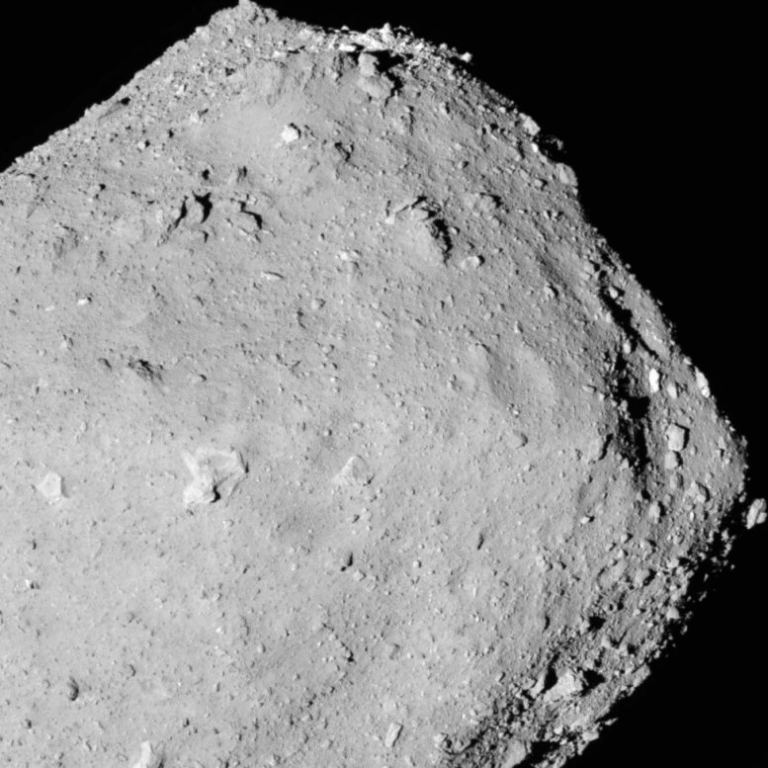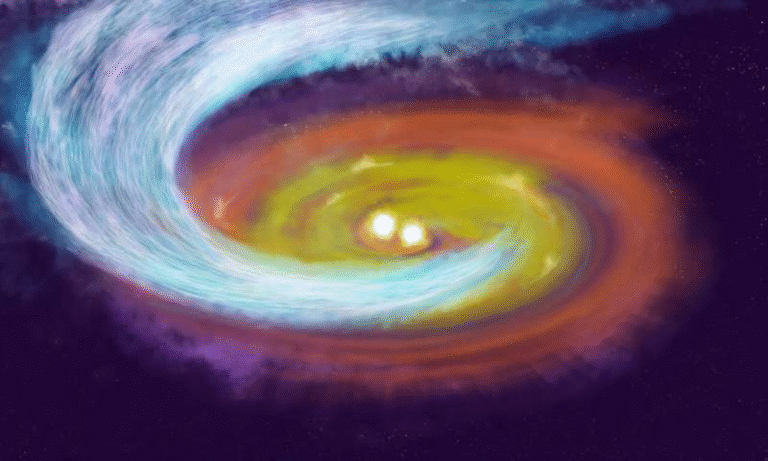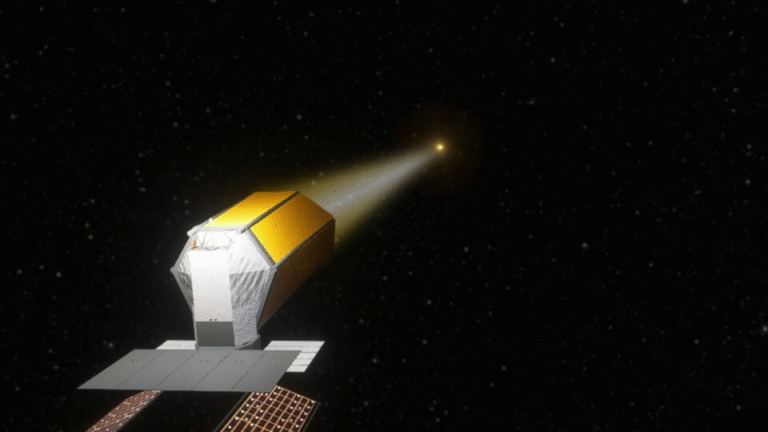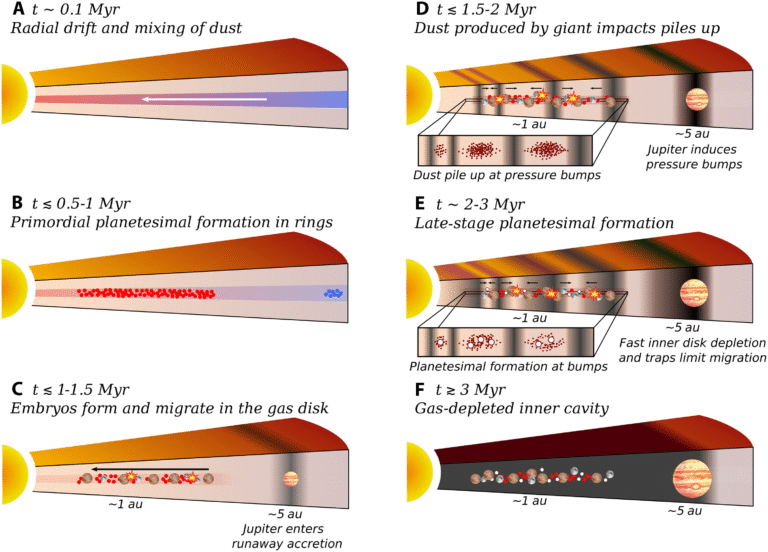NASA’s Twin ESCAPADE Satellites Are Set to Give Mars Its First 3D Look at Space Weather

NASA’s upcoming ESCAPADE mission—short for Escape and Plasma Acceleration and Dynamics Explorers—is gearing up for a November launch that marks a major first in planetary science. For the first time, two identical satellites will travel together to another planet, working in tandem to study Mars’ magnetic fields, upper atmosphere, and ionosphere in full three-dimensional detail. These twin spacecraft, nicknamed Blue and Gold in honor of UC Berkeley’s school colors, are designed to uncover how and when Mars lost most of its atmosphere—a mystery that has shaped the planet into the cold, dry world we know today.
Built and operated by the University of California, Berkeley, the satellites will fly in formation around Mars after arriving in 2027. Their mission is straightforward but scientifically ambitious: create a stereo view of the Red Planet’s dynamic near-space environment. This includes tracking how Mars responds to solar storms, how particles escape into space, and how localized magnetic fields interact with the relentless solar wind.
Below is a clear and detailed breakdown of everything the mission involves, why it matters, and what makes ESCAPADE one of NASA’s boldest low-cost planetary missions yet.
Mission Background and Purpose
Mars has puzzled scientists for decades. Geological evidence shows that it once had rivers, lakes, and perhaps even oceans. That means the planet once had a thicker, warmer atmosphere—something it no longer has. Today, the atmosphere is less than 1% the density of Earth’s, unable to support liquid water on the surface.
ESCAPADE aims to help answer a fundamental question:
Where did Mars’ atmosphere go?
There are only two ways for an atmosphere to vanish:
- It goes into the ground, absorbed or chemically trapped.
- It escapes into space.
Many studies suggest the second pathway—escape to space—played a major role. ESCAPADE’s two satellites will measure the flux, energies, and directions of charged particles leaving Mars. They’ll also examine how solar energy accelerates these particles and how the planet’s patchy magnetic fields influence the escape process.
This stereo, two-vantage-point method is something previous missions like MAVEN or Mars Express could never provide. Those missions needed to wait four or more hours between orbital passes to sample the same region again. ESCAPADE will capture variations within minutes, revealing short-timescale changes in Mars’ upper atmosphere and magnetosphere that scientists have never been able to observe with this level of detail.
The Spacecraft: Blue and Gold
The two ESCAPADE satellites are identical in hardware and design. Each one includes:
- Two electrostatic analyzers to detect ions and electrons.
- A magnetic field detector built by NASA’s Goddard Space Flight Center.
- A plasma measurement instrument developed by Embry-Riddle Aeronautical University.
- A small onboard camera from Northern Arizona University for capturing dust and auroral activity.
- Deployable booms, data processing computers, and custom science instruments designed at UC Berkeley.
Rocket Lab U.S. built the actual spacecraft platforms, while the mission operations center is located in the hills above the UC Berkeley campus.
The total cost to deliver these spacecraft to the 2024–2025 launch period was $49 million, a remarkably low number for a Mars mission. ESCAPADE falls under NASA’s SIMPLEx program, which prioritizes lower-cost, higher-risk missions using commercial partnerships.
The Launch and the New Route to Mars
The satellites will launch from Cape Canaveral, Florida, aboard Blue Origin’s New Glenn rocket. Interestingly, ESCAPADE will be riding on New Glenn’s second-ever launch, reflecting NASA’s increasing willingness to use commercial heavy-lift vehicles for planetary missions.
What truly sets ESCAPADE apart, though, is not just the rocket—but the route.
Instead of taking the typical Hohmann Transfer, which relies on a strict planetary alignment that occurs every 26 months, ESCAPADE will try something different. The spacecraft will first travel to a Lagrange point, an area where gravitational forces from the Earth and Sun balance. They’ll spend about 12 months looping around in a slow, kidney-bean-shaped orbit before returning close to Earth in late 2026.
At that point, they’ll fire their engines, perform an Earth slingshot maneuver, and head toward Mars during its next alignment.
This flexible, multi-step trajectory has enormous implications for future human missions. When people eventually begin traveling to Mars in large numbers, flexible launch windows will be essential. With Earth’s limited launch pads and unpredictable delays, ESCAPADE’s technique could allow spacecraft to “queue up” before the alignment window actually arrives.
In other words, the mission isn’t just doing science—it’s testing a new way to travel to Mars.
Mars’ Magnetic Mystery
Unlike Earth, Mars no longer has a global magnetic field. Instead, it has localized patches of magnetized crust—remnants of an ancient planetary dynamo that died out billions of years ago. These patches create a strange hybrid magnetosphere: part solar-wind-driven, part crustal.
The crustal fields can push the solar wind away up to 1,500 kilometers above the surface, but they don’t provide the same full-planet protection Earth enjoys.
This lack of shielding means:
- More atmospheric particles escape.
- More high-energy radiation reaches the surface.
- Communications and navigation systems for future astronauts will need careful design.
In fact, NASA’s Curiosity rover recorded a massive solar storm last year that delivered 100 days’ worth of background radiation in just one day. ESCAPADE will gather the data needed to better forecast solar storms at Mars—something crucial for human safety.
The Mission at Mars
Upon arrival in 2027, the satellites will begin a seven-month orbit-adjustment phase. Eventually, Blue and Gold will settle into nearly identical orbits, following one another like “pearls on a string.” This setup allows them to capture changes in Mars’ upper atmosphere on timescales from two to thirty minutes, a dramatic improvement over past missions’ multi-hour delays.
The mission will observe:
- Particle flows
- Electric fields
- Solar wind variations
- Auroral events
- How different regions of the atmosphere respond to solar storms
ESCAPADE’s measurements will bring us closer to answering how quickly Mars’ atmosphere is escaping today and how that compares to billions of years ago.
Why ESCAPADE Matters for Future Mars Exploration
Understanding Mars’ ionosphere also has practical benefits beyond science. Radio signals can bounce off this ionized layer, enabling over-the-horizon communication—something astronauts would rely on. Knowing how variable the ionosphere is will matter for rover navigation, surface outposts, and spacecraft operations.
As for human settlement, Mars poses significant hazards. With its thin atmosphere and lack of global magnetic field:
- Blood would boil without a pressurized suit due to low atmospheric pressure.
- Residents would likely need to spend much of their time underground or inside rigid shelters to avoid radiation exposure.
ESCAPADE won’t make Mars safer by itself, but it will supply critical knowledge that future engineers and mission planners will need.





